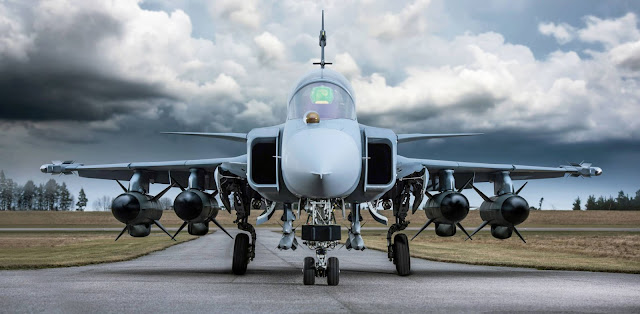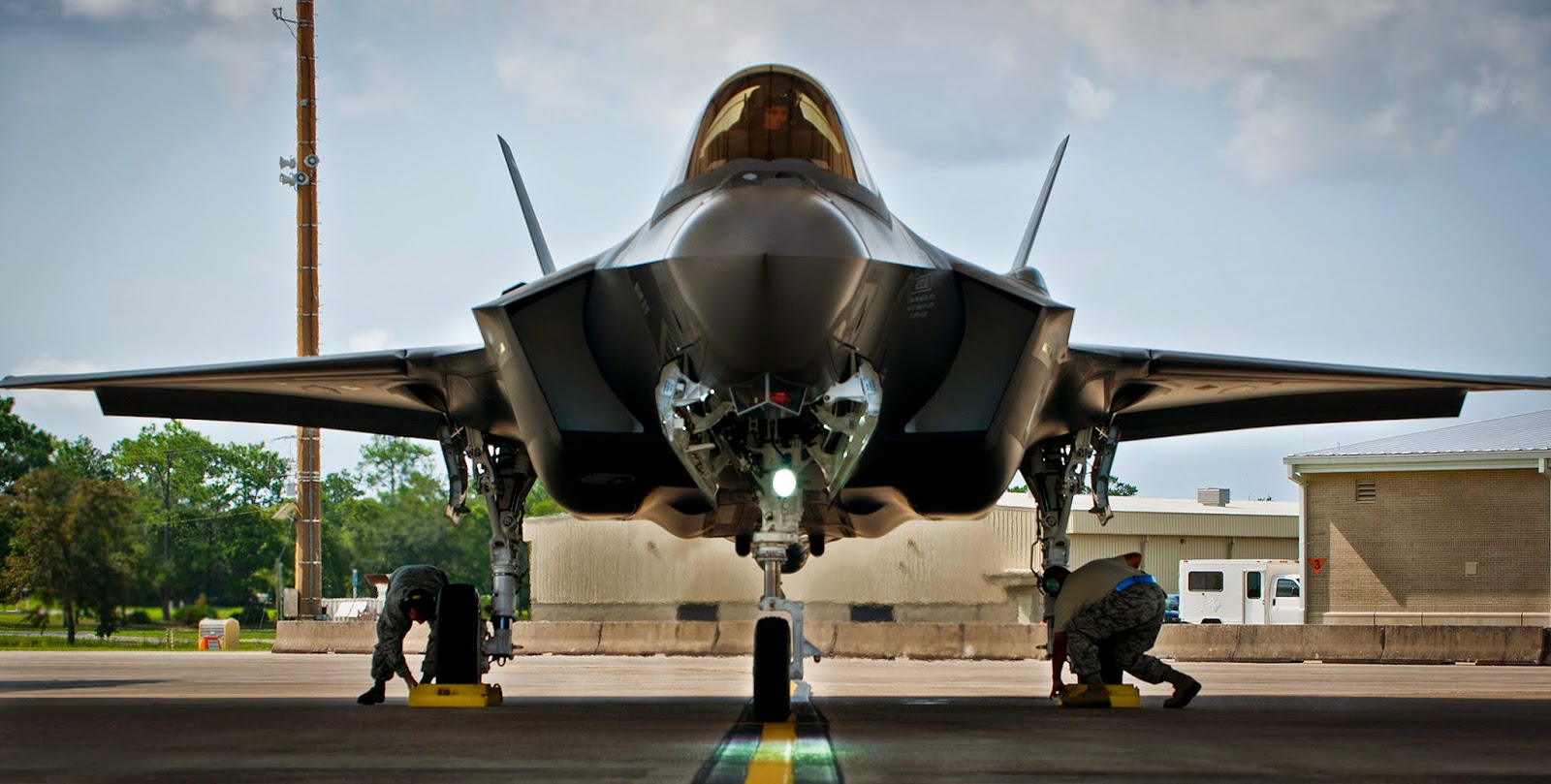Why is the USAF still infatuated with bombers?
It's hard to imagine aerial warfare without bombers. They have certainly "made history". What would WWII have been like without squadrons of B-17s flying over Nazi Germany? How long would the war have gone on if the B-29 "Enola Gay" hadn't dropped the world's first atomic bomb over Hiroshima? Would the Cold War have played out differently if B-52s and Tu-95s didn't stand at constant readiness armed with nuclear "deterrence"?
One has to wonder if the bomber's ability to "make history" is still relevant, however. The days of carpet bombing have (thankfully) been mostly put behind us thanks to startling images from the Vietnam war. The era of televised warfare put the horrors of battle front and center on the living room TV set. B-52s flying over Hanoi weren't dropping tons of explosives on military targets and "evil communists", they were dropping them on city streets and family homes. Military action in Vietnam became increasingly unpalatable for the American public, ultimately leading to a withdrawal.
Television cameras have changed modern warfare. Not only did they give the world a better understanding of the horrors of war, but television cameras would soon find themselves guiding the bombs themselves. Electro-optical (EO or TV) guidance systems were developed as well as GPS and laser guidance. Combined with increases in computing power, air-to-ground munitions became far more accurate.
Video of bombs being indiscriminately belched out of a bomber and laying waste to the ground below has been replaced with precision first-person footage of precision guided bombs finding their intended target. Television footage from Desert Storm over Iraq greatly contrasted that of the Vietnam war. Military targets could be seen being destroyed while little or no damage to the surroundings. Collateral damage could be reduced to a minimum. Real time footage has made traditional wartime censorship impossible. Excessive force has become frowned upon.
So why do traditional strategic bombers, the epitome of "excessive force" in today's world, still exist?
 |
| These bombers ARE history. |
In the modern era of "multi-role" fighters, just about any fighter you can name could be considered a "tactical" bomber. F-16s, F-18s, Rafales, and the like all have strike capability. Even the air superiority F-22 has demonstrated competence in the ground attack role. Dedicated "strike" fighters, like the F-15E Strike Eagle and Su-34 "Fullback" are able to carry precision guided ordinance in amounts that would put a B-17 to shame, while still offering supersonic fighter-like performance.
The traditional "strategic" bomber does seem to be a dying breed, however. With the retirement of the RAF's "V bombers" (Victor, Valiant, and Vulcan) the only air forces left with strategic bomber fleets are the USAF, the Russian Air Force, and China's People's Liberation Army Air Force (PLAAF). Of these, most are 50's era B-52s, Tu-95s, and H-6s. The Russian Air Force has kept fairly current, with updated Tu-22Ms and a small number of Tu-160s. Russia is said to also be working on a newer bomber known as the PAK DA. This pales in comparison to the USAF bomber fleet, however, which is in an entirely different league.
 |
| B-52H |
While the airframes may be old, the USAF's B-52 Stratofortress is just as capable now as it was 50 years ago. Constant upgrades have resulted in a thoroughly modern aircraft capable of deploying anything from a precision guided bomb to to nuclear-tipped air launched ballistic missile (ALBM). While hundreds of B-52s have been built over the years, the USAF has managed to trim its inventory to a rather svelte 76. The "BUFF" (Big Ugly Fat F***er) is expected to serve well into the 2040s.
 |
| B-1B Lancer |
Originally meant to replace the B-52, the B-1B Lancer is faster, stealthier, and much more survivable. It also offers near identical, if not superior capability. It is also cheaper to fly, although it doesn't quite match the B-52's combat readiness. Like the B-52 it continues to receive regular upgrades.
The USAF still operates 62 of the 100 B-1Bs built. While its beginning was controversial, the B-1 or "Bone" has become a mainstay of the USAF fleet. It is expected to fly until 2038.
 |
| B-2 Spirit |
Rounding out the USAF's bomber fleet is the infamous B-2 Spirit. The most expensive aircraft ever built, the B-2 is the pinnacle of bomber technology. While it doesn't have the payload of the B-1 or B-52, the B-52 can still carry 50,000lbs worth of ordinance deep into enemy territory without being detected. It's tailless, flying wing design makes it even stealthier than the much smaller F-22 or F-35.
Three bombers. All with similar roles and capabilities. Needless to say, there is quite a bit of redundancy and overlap here. All three aircraft are expensive to fly, with the B-2 costing almost $170,000 per hour of flight and the B-1 costing almost $60,000/hr.
So what does the USAF do when it needs to trim costs?
It cuts the A-10.
 |
| A-10 "Warthog". |
The A-10 is a truly unique aircraft that excels in close air support. The USAF justifies canceling the A-10 by stating that it is a single-role, "low and slow" aircraft. They also state that a lot of close air support is now done by aircraft like the F-16 and B-1B.
Even if the B-1B was truly able to perform CAS duties, a claim some find dubious, one has to wonder... Why is the USAF so keen on getting an aircraft that costs $57,000/hr to fly to perform the duties of an aircraft that costs $17,000/hr to do the same thing? Why is the USAF in such a hurry to retire a truly unique and useful aircraft when it could realize identical if not greater cost savings by retiring the entire B-1B or B-52 fleet?
If the USAF chose to retire the B-1B, it would still have nearly one-hundred advanced strategic bombers, as well as countless tactical bombers like the F-15E. If it chose to give the B-52 its well-deserved rest, it would still have 82 of the most advanced strategic bombers ever made. Not only that, but the cost savings would be huge, especially considering the relative drop-in-the bucket savings ($3.7 billion) gained from retiring the A-10. By contrast, the planned upgrades to the B-1B amount to $1.3 billion alone.
 |
| Popular Mechanics idea of a Next Generation Bomber. |
The USAF simply likes its bombers too much. In fact, it considers its Next Generation Bomber its third highest priority for the future, right behind the F-35 and KC-46 tanker. Some are already questioning what the NGB will even be used for, besides intimidation.





The obsession is for good reason. Capacity less than 2% of the air fleet US bombers delivered over 20% of the ordinance in Iraq2. Since then we have doubled more than twice over the number of targets that can be hit per flight.
ReplyDelete-Flying from secure US mainland bases without anyone's permission striking anywhere on gods green earth en-mass less than 24hrs.
B-2 and B-1 more than carry their salt and B-52 is so far out in front it is just funny.
In fighting ak toting insurgents heavy bombers are maybe irrelevant but when it comes to the big game they are critical.
Go read up on the radical change JDAM have brought to the heavy bomber force and their contribution to the US war machine.
Operation Iraqi Freedom
Afghanistan
and keep in mind since then the JDAM per flight targeting has been multiplied.
I think you have just reinforced my point in your first paragraph.
ReplyDeleteThe USAF bomber fleet occupies less than 2% of the air fleet... Yet gobbles up MUCH more than 2% of the operating budget. The current budget just for "upgrades and production" is nearly 3% of the USAF's total budget ($170 billion as of 2010). This is expected to double by 2020 with the NGB. This doesn't include operation, just production and upgrades.
http://www.bloomberg.com/news/2014-05-06/bomber-plane-budget-by-u-s-air-force-projected-to-double.html
"delivered over 20% percent of the ordinance in Iraq2"... That means almost 80% of ordinance was delivered by multi-role fighters like the F-16 and F-15E or much cheaper CAS platforms like the A-10, MQ-1, or Apache. Do you really think that extra 20% changed the outcome in Iraq? More likely they were just justifying the bombers' existence (and budget).
Keep in mind here that I am not questioning the usefulness of strategic bombers altogether. They are a great deterrent, not to mention a huge psychological advantage... Just look how effective a B-2 "flyover" was the last time N. Korea started getting rowdy.
What I am questioning is the need for the USAF to maintain THREE separate and very expensive strategic bomber platforms, especially at the expense of a dedicated CAS platform like the A-10. Keep the B-1 and B-2. The B-52 isn't viable over contested airspace, and its more expensive to fly than the B-1. Use the cost savings from retiring the B-52 to keep the A-10, and there's likely to be plenty cash left over.